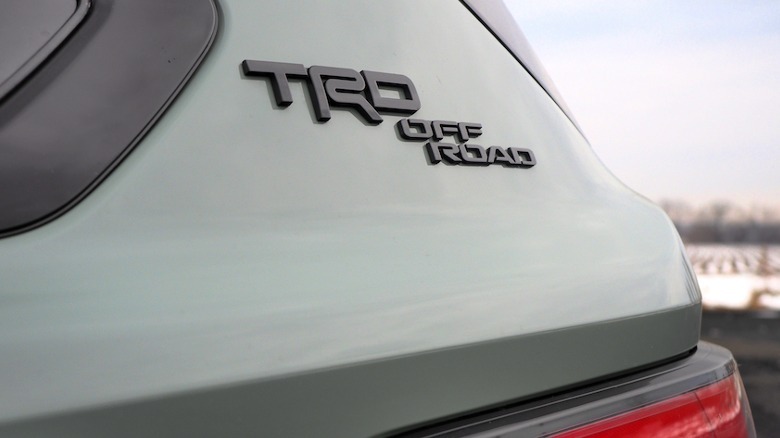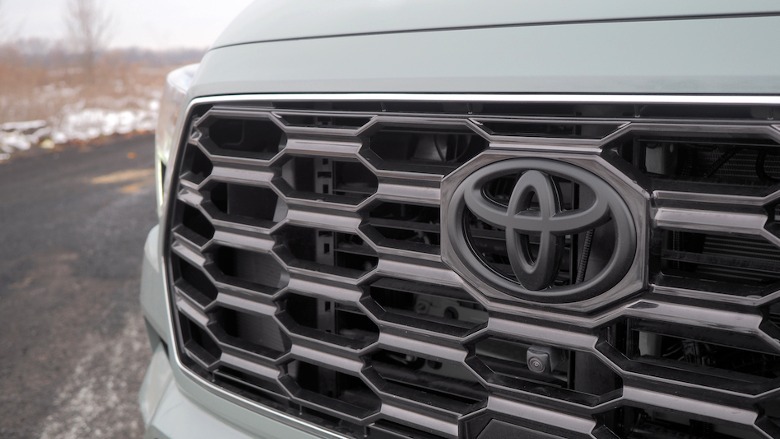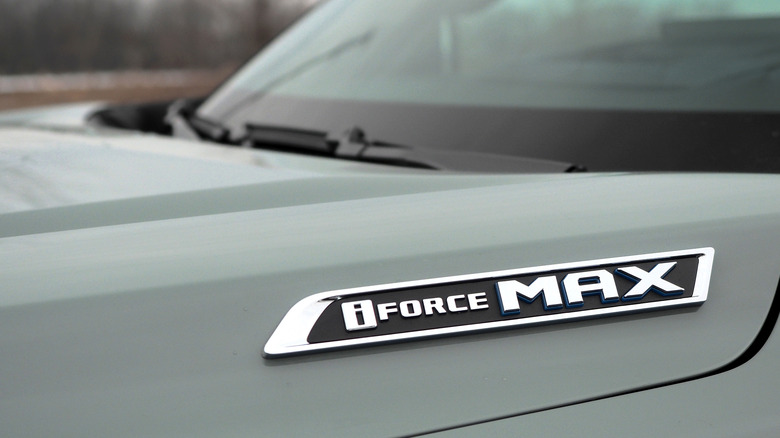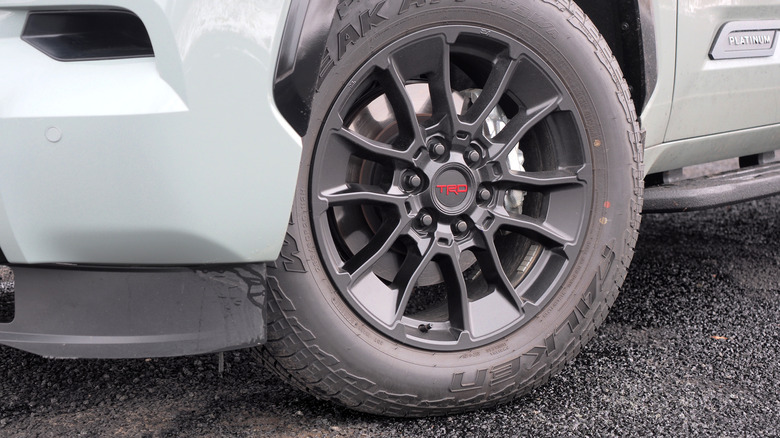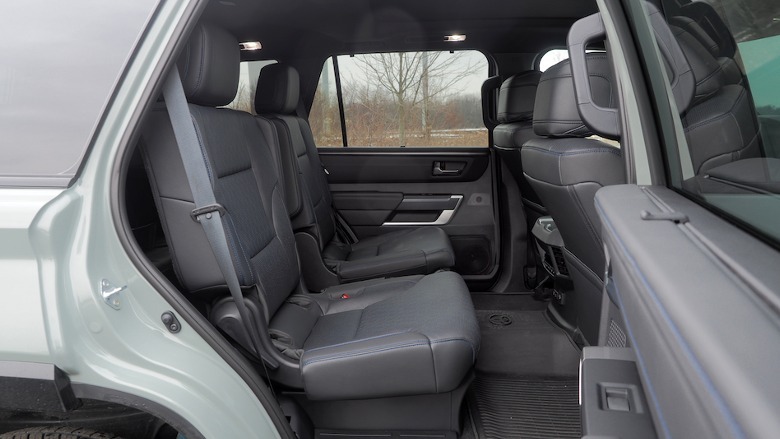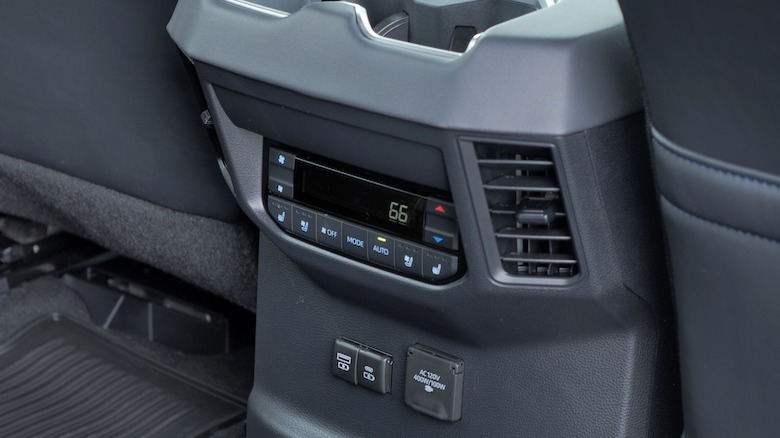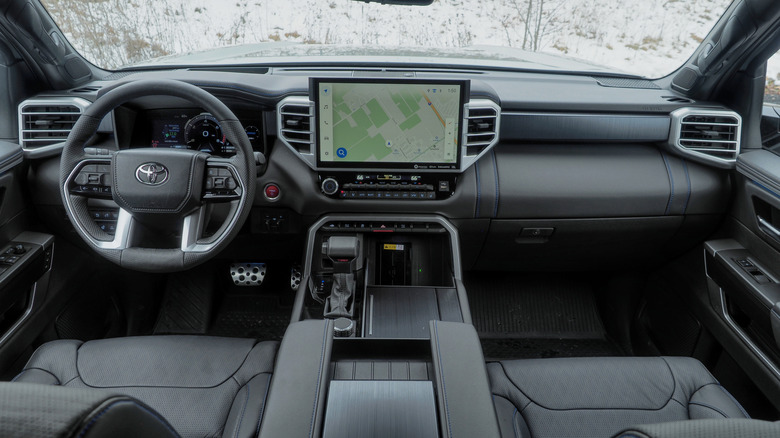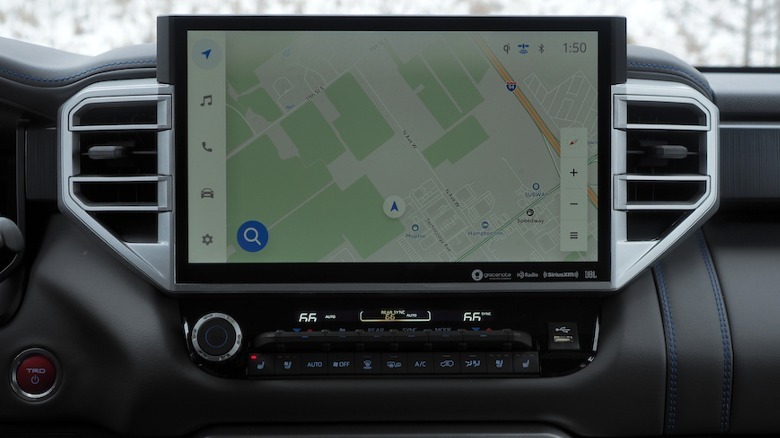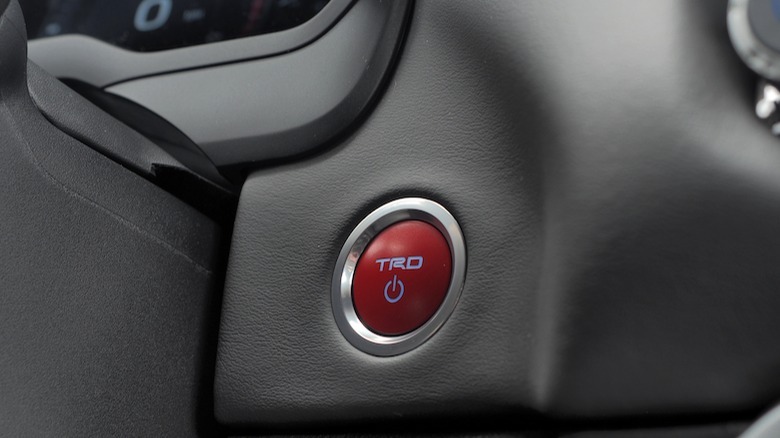2024 Toyota Sequoia Review: Big SUV Asks A Bigger Question
- Standard hybrid engine is smooth and powerful
- Tundra underpinnings mean genuine off-road ability
- Solid standard levels of gadgets and comfort tech
- Hybrid V6 can still be thirsty
- Rivals have more cargo and third-row space
- Do you really need this much off-road talent?
If you believe the commercials, every full-size SUV owner is eagerly piling their family into all three rows and heading out for an adventure. Reality, of course, is somewhat more mundane (and a lot less aspirational). Families want outsized SUVs for their practicality and aesthetic, and if there's a splash of electrification to take the sting out of refueling, then all the better.
Now in its third generation, the 2024 Toyota Sequoia promises all that and more. Wrapping its three rows of seats in a tougher, burlier design, this is no minivan masquerading as something it's not. A truck platform and available TRD off-roading goodies make sure of that.
As is often the way, then, the hardest question is whether your reality lives up to your expectations of it. Do you really need a locking rear differential and an electronically controlled transfer case in your family SUV? Is nearly 9 inches of ground clearance more important than trunk space with all three rows up?
Big SUV, big price
Unsurprisingly, given the shared platform and plenty of other parts, the Sequoia looks a lot like its Tundra sibling. It's an imposing SUV with LED lights, standard front and rear, and outsized badging. Wheel sizes range from 18 to 22 inches in a variety of finishes. Last year's Solar Octane orange paint has been retired, but there are at least some brighter red and blue options available.
It's a big SUV, and it comes with a big price. The entry 2024 Sequoia SR5 trim kicks off at $60,875 (plus $1,595 destination), while the luxury flagship Capstone trim starts at $77,865 (plus destination). The 2024 Sequoia TRD Pro is actually a little more expensive, from $78,710 before destination, though that also gets you 4WD as standard. Toyota will charge extra for that on other trims.
This 2024 Sequoia Platinum slots into the middle of the lineup, from $73,465 plus destination. Expect to pay $2,575 for a 4WD and, assuming you check that box, at least $2,310 more for the TRD Off-Road package.
An electrified V6 engine comes as standard
Every 2024 Sequoia trim now comes with the same 3.5-liter twin-turbo V6 hybrid engine. Dubbed i-FORCE MAX — the "MAX" addition distinguishes it from Toyota's non-electrified turbocharged engines — it combines the gas engine with a permanent magnet synchronous motor/generator and a 10-speed automatic transmission.
In total, there's 437 horsepower and 583 lb-ft of torque to play with, the electric motor contributing 48 horsepower and 183 lb-ft of that. The tow rating varies depending on the exact trim, though it almost always clocks in north of 9,000 pounds (the lavish Capstone dips just below that).
The only drivetrain option is whether you go for 2WD with all the power headed to the rear wheels or cough up the extra for part-time 4WD. Both enjoy an automatic limited-slip rear differential, but only the 4WD Sequoia packs an electronically controlled transfer case and an electronic locking rear differential.
Unexpectedly capable off-road, too
Usually, the Sequoia has 8.6 inches of ground clearance, a 15-degree approach angle, and a 20-degree departure angle. Opting for the TRD Pro bumps the approach angle to 23 degrees and the clearance up to 9.1 inches, courtesy of the 2.5-inch FOX Internal Bypass coilovers and rear remote-reservoir shocks. It also adds a TRD Pro front stabilizer bar, extra underbody protection, and electronic niceties like Multi-Terrain Select (MTS) drive modes, Crawl Control, and Downhill Assist Control.
Sadly, you can't have all that with the optional adaptive variable rear air suspension, offered as an option in other trims (it's from $2,050, but that also adds power running boards). That brings a degree of extra plushness to the Sequoia's ride, along with the practicality of load-leveling rear height control.
What you can have is the TRD Off-Road Package and the air suspension. Now, with that combination, you don't get the fanciest suspension- a more mainstream set of Bilstein shocks- but you still enjoy the electronically controlled locking rear diff, MTS system, and other electronic additions from which the TRD Pro benefits. Toyota also bundles special 20-inch wheels and all-terrain rubber into the TRD Off-Road Package, too, along with a front skid plate and some aesthetic changes.
Are Toyota's priorities your priorities?
Even without the TRD Pro version, it's a sign of Sequoia's serious off-road capabilities that even soften for daily family driving. The big SUV is still a respected mud plugger. Still, you can't help but wonder if an Auto AWD setting wouldn't be more appealing to that demographic, which generally wants the reassurance of "yes, this will do just swell in the snow" more than recreating an ad-hoc Baja experience.
On the asphalt, where it'll likely spend most of its time, Toyota's hybrid sure is punchy. As in the Tundra — and soon to appear in the new Tacoma — the i-FORCE MAX drivetrain is genuinely quick. This particular Sequoia might tip the scales at a beefy 6,150 pounds, but the judicious application of electric power leaves it surging away from a standing start.
Switch to Sport mode, and the generally syrupy 10-speed gearbox holds lower ratios for longer, though frankly, the Sequoia's brand of "runaway rhino" doesn't really need it. Thank goodness for big, potent brakes.
It's a smooth beast, too, the transition between gas and electric power handled seamlessly, and though the steering is definitely tuned on the light side, I suspect that's just what owners want. What they might not be so keen on is the thirst: in 4WD form, the Sequoia is rated for 19 mpg in the city, 22 mpg on the highway, and 20 mpg combined (two miles per gallon less, in each category, than the 2WD version). They're hardly frugal figures, particularly for a hybrid, but my real-world experience of roughly 17 mpg proved even worse.
Spacious but not segment-leading
Hungry, then, but at least the Sequoia is spacious and comfortable. Where entry-trim models have seating for eight, higher-specs swap the middle-row bench for a pair of captain's chairs. These — like the third-row bench — tumble and fold with ease. The rearmost row slides for a trade-off of legroom to cargo space (from 11.5 cu-ft to 22.3 cu-ft); drop it altogether, and that expands to 49 cu-ft. With all the seats down, you're looking at 86.9 cu-ft total. It's big but not quite as much as a 2024 Ford Explorer offers.
While the black leather interior — the only option on the Platinum, unlike the Capstone's duo-tone black and white hide — is dour, the standard panoramic moonroof keeps things from feeling too glum. Toyota adds plenty of storage nooks and cubbies, too: a big storage bin between the front seats, sizable door pockets, and lots of cup holders.
Platinum trim gets heated and ventilated seats not just for the front but the second row, too. Charging is handled with a Qi wireless pad in the front, 120V AC outlets in the second row and the trunk, and a healthy spread of USB-A and USB-C ports.
A welcome tech upgrade
Arguably, the biggest cabin upgrade when Toyota last revamped the Sequoia was to the infotainment system. Though the base SR5 trim gets an 8-inch touchscreen, everything above that switches to a pretty vast 14-inch version. Either way, Toyota's latest infotainment software is a night-and-day improvement over its predecessor: a clean UI that's easy to navigate, wireless Apple CarPlay and Android Auto support, and even a surprisingly capable voice control system. A 12.3-inch digital cluster is standard, too, while higher trims get a 10-inch color head-up display.
Platinum trim gets the 14-speaker JBL audio upgrade that's optional on cheaper versions of the SUV. Tri-zone climate control is standard, as is the eminently useful panoramic camera system, which helps offset the slab-sided Sequoia's innumerable blind spots and its uncomfortably large turning circle. Better still, Toyota puts a big, easy-to-find-during-parking-panic button in the middle of the center console to rapidly summon that camera view.
In fact, the whole safety tech suite is comprehensive as standard. In addition to blind spot warnings, rear cross-traffic alerts, and trailer merge warnings, there's Toyota Safety Sense 2.5 on all trims. That bundles pre-collision assistance with pedestrian detection, lane departure alerts with steering assist, lane tracing assist, and auto high beams. Adaptive cruise control is also standard.
2024 Toyota Sequoia Verdict
The Sequoia's appeal hinges on just how seriously you take your SUV. Or, to be more specific, just how serious the places you take your SUV are. With the same eminently capable underpinnings as the Tundra pickup, Toyota's family hauler is also a bonafide off-roader, even if this Platinum TRD Off-Road example isn't quite as adept as the full TRD Pro.
That's great, but it's also arguably much more than the majority of families actually require. And, while the standard V6 hybrid engine is a nice change from the near-ubiquitous V8 found elsewhere, those entering Sequoia ownership expecting Prius-levels of electrified efficiency will be disappointed.
In short, the Sequoia loads up on off-road credibility, but in the process, you sacrifice some of the practicality and refinement rival three-row SUVs wield – or, for that matter, Toyota's own 2024 Grand Highlander. Even if, no, those alternatives aren't perhaps so skilled in the mud. Toyota's biggest SUV is up for adventure, but it pays to be realistic about just how eager you and your family are for the same.

